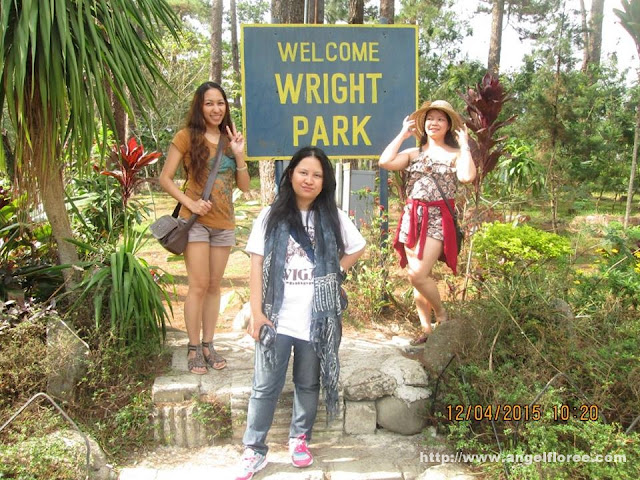 |
| Mr. Albee Marcia doing a lecture about the Introduction to Honeybee Farming. |
What comes into your mind when you think of honey? Probably
we will say that it is expensive, nutritious and delicious. Last March 11,
2017, Zoomanity Group gave us the chance to be part of a training about
Honey Bee Farming with an expert guest speaker in the person of Mr. Albee
Marcia, an entomologist expert in commercial bee keeping and honey bees. The
event was held in Paradizoo, Mendez Cavite as a part of the three month long
Power of Three program that aims promote basic training education in different
fields of Agriculture that could inspire not only the students but those who
are interested to venture in this field.
 |
| Mr. Albee Marcia is an expert in commercial Honeybee Farming. |
 |
| Flow Hive System. |
Mr. Albee gave educated us about the basics in Honey Bee
farming with demonstrations about the equipments and essentials we need to
have. He also enumerated the types of honey bees and history of Bee Farming.
Here are the lessons I learned from the training:
1. Honey Bees are very useful insects. They have
this important role in the ecosystem and food chain because they are
responsible in pollination and propagation of plants.
2. In commercial Bee Keeping, you should attend a
complete seminar because venturing in this business is very risky. You need to
maximize and develop your potential in farming and culturing the bees and also
takes years.
3. Honey is a food that is part of the history since
then. The history of Bee Keeping traces back in 1930s.
4. Bee Keeping is an art and science to produce
honey, learning of the bees’ behavior, process and biology.
5. The full seminar for Honey Bee Farming lasts 2-3
days with 1 day for theory and 1 day for hands on application.
6. The reasons why people are interested in Honey
Bee Farming are curiosity, production of honey, investment, business and as a hobby.
7. The
three species of honey bees are the Apis Dorsata
also called pukyutan in the Philippines. These are large type of honey bees
found in forests; the Apis Cerana are
the Asiatic honey bees that lives commonly in dark places the Apis Adreneformis that lives in
subtropical regions in Southeast Asia, specifically in Palawan; they are the
smallest species in Asia and the European Apis
Mellifera that are breed from wild kind of bees to being domesticated.
8. There
are three kinds of bees in one colony. The Queen
Bee the female that lays 1,500-3000 eggs. Second are the Worker Bees that we commonly see as
performer of duties like honey makers and stingers. Last are the Drones, the male bees that mate the
queen and carrier of genes.
9. Bees
are important in nature’s biodiversity so we should conserve and preserve the
bees.
10. Honey
is the food for the bees.
11. The
younger the queen, the better the colony.
12. The
best months to start honey bee farming are BER months (September-December).
13. Bubbles
in honey indicate that it is not good and fermented.
14. Pure
honey is so viscose that it exhibits pressure when poured.
15. Honey
is a simple sugar means it will burn fast inside the body. It is also a natural
steroid and has calming effect.
16. There
is no expiration for honey.
 |
| Very nutritious lunch! |
At Lunch Break, we were served sumptuous nutritious
foods (vegetable salad, adobo, fried fish and honey juice). The ambiance
overlooking the Paradizoo Farm is so relaxing. After lunch Mr. Albee brought us
to the Honey Bee House to witness how he demonstrates the collection of honey
in colonies and how to operate the machines to extract. Also, he taught us the
uses of Bee’s wax, the wax produced by honey bees and discarded into their
hives.
 |
| Sir Albee harvesting honey from a colony unit. |
 |
| Perfect Hexagons! |
 |
| Bees Wax |
 |
| Flowing Honey. |
 |
| Honey filtered from solids. |
Our mentor taught us the new innovation
called Flow Hive. It was like a tap for water where you will harvest honey
after you turn it a number of times giving you less effort in harvesting honey
and less stress for the bees because you will not open your hive frequently.
For my readers who are interested in this
kind of investment, it is estimated to cost less than 20,000 PHP for a flow hive,
a whole unit for 35,000 PHP and a colony for 9,500 PHP.
I would like to thank Ms. Grace B. Nicolas
for having me as one of the bloggers to cover the event and I hope this blog
will help my readers in the Philippines who are thinking of agricultural business
to start. Want to visit Paradizoo? You can contact Ms. Grace of Tag Media at
grace@tagmedia.asia or text 09166299381.
-FAF


















































